
Use the Google Jamboard to compare and contrast features of Local Access Networks and Wide Area Networks.
- Subject:
- Computer Science
- Networking and the Internet
- Material Type:
- Interactive
- Author:
- Tara Williams
- Date Added:
- 06/06/2022

Use the Google Jamboard to compare and contrast features of Local Access Networks and Wide Area Networks.

Students will learn all about computer networks from a given website by answering questions on the provided worksheet.

A slideshow presentation that briefly explains networks and how they work.

This lesson is for Networking and the Internet. The student will learn the difference between a network and the internet. They will be reminded of the importance of internet security and safety and how not everything on the internet is real. This lesson will use videos, books and hand on time to understand the how a network vs the internet works.

Technology has not just changed over time. It has changed the way citizens live their lives and perform their jobs. This lesson will discuss how communication has changed over time in the local community.

Students will warm up by participating in a Kahoot to see how many logos to online communication they recognize. The students will review electronic communication they were taught in first grade, email and social media, and be introduced to blogs and video conferencing as additional ways information can be electronically communicated.
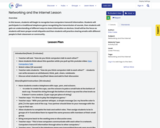
In this lesson, students will begin to recognize how computers transmit information. Students will participate in a traditional telephone game recognizing the transmission of sounds, then students will gain an understanding of different ways to share information on devices. Email will be the focus as students will learn proper email etiquette and then students will practice sharing emails with different people in their classroom or community.
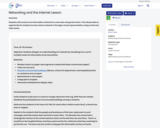
Students will construct an information network for a new town using train tracks. This will provide an opportunity for students to learn what a network is through a visual representation using a train and train tracks.
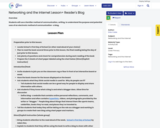
Students will use a familiar method of communication, writing, to understand the purpose and potential uses of an electronic method of communication- a blog.

A Quizlet study set to help introduce the internet.
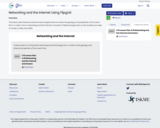
This lesson plan features several science experiments to review the geology and properties of the ocean floor. In order to tie in networking and the internet I included a FlipGrid Assignment so the students are able to create a video and selfie.
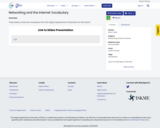
These slides contain the vocabulary from the Virginia Department of Education for this strand

This is an unplugged version of how computer data packets travel through computer networks using rope, binder clips, envelopes and index cards.
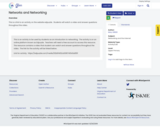
This is a link to an activity on the website edpuzzle. Students will watch a video and answer questions throughout the video.

This is visual that shows the OSI Model of Networking. This may be used in the classroom as a poster.

These Google Jamboard slides can be used for class discussion about types of online communication. Definitions are from the CS Standards of Learning Curriculum Framework for Grade 2.

These quick matching activities can be used as quick formative assessments with elementary students.
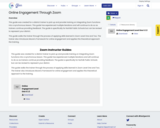
This guide was created for a district trainer to pick up and provide training on integrating Zoom functions into a synchronous lesson. This guide has experienced multiple iterations and will continue to do so as trainers continue providing feedback. The guide is specifically for Norfolk Public Schools but can be revised to represent your district. This guide walks the trainer through the process of applying skills learned in Zoom Level One and Two. The trainer also introduces Moore's Framework for online engagement and applies this theoretical approach the training.

High School students are online all the time developing appropriate and inappropriate relationships. Because of their online experiences, they may feel well-equipped to recognize a bad situation and know how to get out of it. However, many times teenagers are drawn into a seemingly harmless conversation that will lead them to a dangerous offline encounter that they cannot escape.This lesson will provide strategies to teens to help them identify relationships that are inappropriate, how to avoid them, and how to get out of those relationships as soon as possible.

Let’s take a look at three Virginia industries (agriculture, technology, and shipbuilding). Then we will ask an industry expert a question that we have about their particular area. Some of our questions will be emailed and some will be “snail mailed”. We will discuss the pros and cons of both of those types of correspondence and talk about networking and the internet.